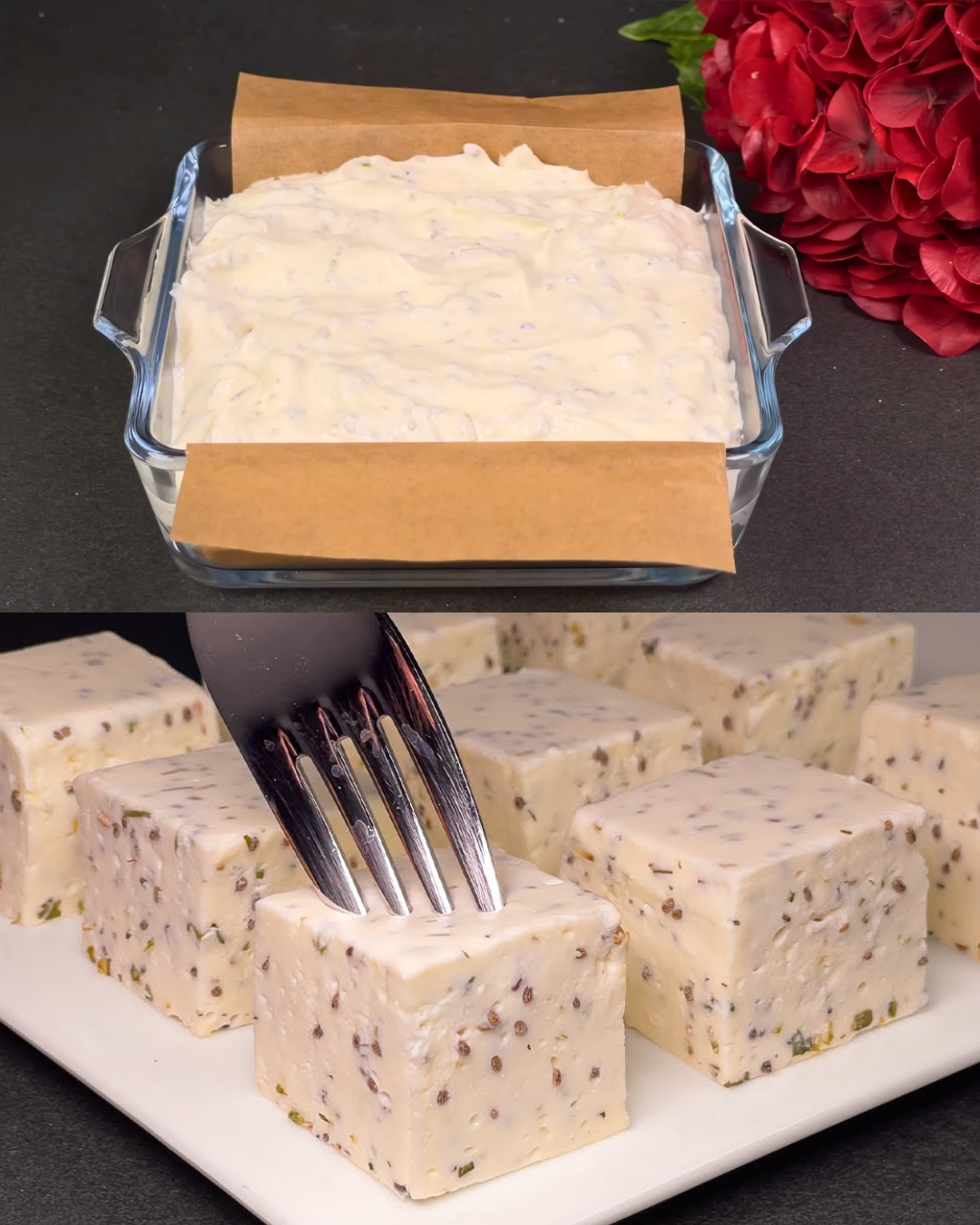Labneh, a creamy, tangy Middle Eastern cheese made from strained yogurt, is a kitchen staple in many parts of the world. Known for its smooth, velvety texture and rich flavor, labneh can be used in a variety of ways—spread on bread, served as a dip, drizzled with olive oil, or added to salads. But why settle for store-bought versions when you can easily make your own at home? This homemade labneh recipe is not only simple to prepare but also incredibly rewarding. With just a handful of ingredients, including full-fat milk, gelatin, and lemon juice, you can create a fresh batch of labneh that will take your meals to a whole new level.
What makes this recipe truly timeless is its adaptability. Labneh has been enjoyed for centuries in the Middle East, and it has slowly gained popularity around the world thanks to its rich, wholesome flavor and versatility. By making your own labneh, you have full control over its texture and taste, ensuring a fresh and authentic experience every time. The addition of optional chia seeds introduces an interesting twist, adding extra nutrients and a subtle crunch to the creamy cheese. Whether you’re looking to incorporate more dairy into your diet, explore new culinary traditions, or simply enjoy a delicious homemade treat, this labneh recipe is a must-try.
Beyond its use as a dip or spread, homemade labneh can elevate countless dishes. It can be used as a creamy topping for baked potatoes, a base for savory pies, or even as a healthier substitute for sour cream in your favorite recipes. Its tangy flavor and smooth texture make it a perfect accompaniment to both savory and sweet dishes. Making your own labneh is not only a fun culinary project, but it also offers the opportunity to enjoy this popular dish in its freshest form.
In this guide, we’ll take you step by step through the process of making homemade labneh from scratch, including all the tips and tricks you need to ensure it turns out perfectly every time.
Full Recipe:
Ingredients (Makes Approximately 4 Cups)
For the Yogurt Base:
- 8 cups (2 liters) full-fat milk
- Juice of 1 large lemon
- 1 tablespoon (20 grams) gelatin
- 1/3 cup (80 ml) water
- 1 tablespoon chia seeds (optional)
- Salt, to taste
- Sugar, to taste (optional)
- Dried Provençal herbs (optional), to taste
Steps on How to Make Homemade Lemon Yogurt with Gelatin and Chia Seeds:
- Prepare the Gelatin:
- Begin by softening the gelatin. In a small bowl, combine the gelatin with 1/3 cup (80 ml) of water. Stir gently until the gelatin is fully dissolved. Let it sit for 5-10 minutes, allowing the gelatin to bloom and thicken slightly.
- Heat the Milk:
- In a large saucepan, pour in the full-fat milk. Over medium heat, heat the milk until it is hot but not boiling (about 85-90°C or 185-194°F). Stir occasionally to prevent the milk from scalding. Once the milk is heated, remove it from the heat and allow it to cool for a few minutes.
- Add the Gelatin to the Milk:
- Once the milk has cooled slightly, add the bloomed gelatin mixture to the milk, stirring gently to ensure that the gelatin is evenly distributed. The gelatin will help thicken the yogurt as it cools.
- Add the Lemon Juice:
- Squeeze the juice of 1 large lemon into the milk, stirring to incorporate. The acidity from the lemon will help curdle the milk and give it that familiar tangy yogurt flavor. Adjust the amount of lemon juice to your taste preference.
- Optional: Add Sugar, Salt, and Herbs:
- If you prefer your yogurt to be a bit sweeter, add sugar to taste (about 1-2 tablespoons, or as desired). A pinch of salt can also help balance the flavor. For a more savory variation, you can stir in a small amount of dried Provençal herbs such as thyme, rosemary, or oregano for a unique twist.
- Let the Yogurt Set:
- Pour the milk mixture into a clean, heatproof container or a large bowl. Cover the container with a clean towel or lid. Let the yogurt sit at room temperature for about 8-10 hours to set. The yogurt will begin to thicken as it cools, and the flavors will develop during this time.
- Add Chia Seeds (Optional):
- If you’re using chia seeds, now is the time to add them. After the yogurt has cooled and thickened slightly, sprinkle the chia seeds over the top. Stir well to distribute them evenly through the yogurt. The chia seeds will add a nice texture and provide extra fiber and omega-3 fatty acids.
- Refrigerate:
- Once the yogurt has fully set, transfer the container to the refrigerator and chill for at least 4 hours before serving. The yogurt will continue to thicken as it cools, reaching a perfect creamy texture.
- Serve:
- Once chilled, the yogurt is ready to serve! You can enjoy it as is or add your favorite toppings, such as fresh fruit, granola, or honey. For a more indulgent treat, you can even drizzle a little maple syrup or agave over the top.
Prep Time: 15 minutes (excluding waiting and refrigeration time)
Cooking Time: 10 minutes (for heating milk and dissolving gelatin)
Total Time: Approximately 8-10 hours for setting and 4 hours for chilling
KCAL (per serving, approximate):
- Calories: 150 kcal
- Protein: 6g
- Carbs: 9g
- Fat: 10g
- Fiber: 1g
Servings: 4-6 servings
Why This Recipe is Timeless:
Homemade yogurt, especially with the addition of lemon and chia seeds, is a recipe that has been loved for generations. It’s timeless because it uses simple, natural ingredients to create something that is far superior in taste and quality to store-bought alternatives. You can control the sweetness, texture, and flavor of your yogurt, making it a healthy and satisfying option for people of all dietary preferences. The tanginess of the lemon complements the creamy texture of the yogurt, while the chia seeds provide a pleasant crunch and a boost of nutrients.
What makes this recipe so special is how easy it is to prepare while still yielding a product that feels like a luxurious treat. The gelatin adds a richness and thickness that’s hard to replicate in traditional yogurt recipes. Plus, making yogurt at home means you can skip the preservatives and unnecessary additives found in many commercial varieties. Whether you’re a health-conscious individual, a busy parent, or simply someone who loves to cook, this recipe is both practical and delicious.
Nutrition Facts (per serving):
- Calories: 150 kcal
- Protein: 6g
- Carbs: 9g
- Fat: 10g
- Fiber: 1g
- Calcium: 15% of the daily value
- Vitamin C: 10% of the daily value
FAQs
Can I make this yogurt without gelatin?
Yes, you can omit the gelatin if you prefer a softer consistency. The gelatin helps thicken the yogurt, but if you don’t mind a looser texture, it’s optional.
Can I use a non-dairy milk substitute?
Yes, you can substitute full-fat milk with coconut milk, almond milk, or soy milk. Keep in mind that non-dairy milk may not produce the same creamy texture as full-fat cow’s milk.
How long does this yogurt last in the fridge?
This homemade yogurt will last for about 4-5 days in the refrigerator. After that, it may begin to lose its fresh flavor and texture.
Can I make this yogurt thicker?
If you prefer thicker yogurt, try adding more gelatin or increasing the amount of chia seeds. Both will contribute to a creamier consistency.
Tips for Making Homemade Lemon Yogurt:
- Use Fresh Lemon: Freshly squeezed lemon juice will yield a more vibrant flavor than bottled lemon juice.
- Let the Yogurt Set at Room Temperature: The key to getting a nice, thick texture is allowing the yogurt to set at room temperature for several hours before refrigerating it.
- Adjust the Sweetness: Depending on how you plan to use the yogurt, you may want to adjust the sweetness. If you’re using it in smoothies or desserts, a little more sugar might be needed.
- Experiment with Flavor Add-ins: You can experiment with different flavorings such as vanilla extract, maple syrup, or even a hint of lavender for a unique twist.
Storage Tips:
Store homemade yogurt in an airtight container in the refrigerator. Keep it covered to maintain its freshness, and consume within 4-5 days. You can also freeze yogurt for longer storage, but keep in mind that freezing may alter its texture.
Conclusion:
Homemade lemon yogurt is a simple, healthy, and delicious way to treat yourself to a natural, probiotic-rich snack. With the added benefit of gelatin for extra thickness and chia seeds for texture, this yogurt becomes a perfect balance of creamy, tangy, and crunchy. Whether you enjoy it on its own, layered with fresh fruit, or swirled into smoothies, this yogurt recipe is sure to become a go-to in your kitchen. So why not skip the store-bought varieties and create your own batch of this wholesome, delightful treat at home? It’s easy, customizable, and guaranteed to impress!

